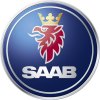
| - |
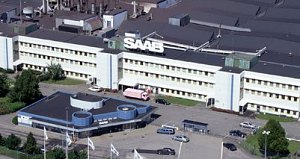
2010: 31,696 units
2009: 39,903 units
2008: 93,338 units
2007: 124,929 units
2006: 132,957 units
2005: 126,401 units
2004: 127,541 units
Production:
2009: 20,791 units
2008: 86,120 units (9-3: 70,534; 9-5: 14,391; Cadillac BLS: 1,195)
2007: 119,912 units (9-3: 94,595; 9-5: 22,545; Cadillac BLS: 2,772)
2006: 129,142 units (9-3: 91,986; 9-5: 33,890; Cadillac BLS: 3,266)
2005: 121,059 units (9-3: 91,851; 9-5: 29,085; Cadillac BLS: 123)
2004: 120,488 units (9-3: 82,969; 9-5: 37,519)
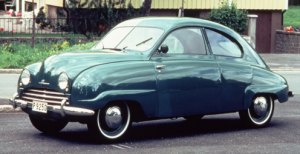 Saab 92
Saab 92Things got better in 1968 with the introduction of the all-new 99. Its unique (and odd) shape would characterize Saab for the next 25 years. The evergreen model was given continuous updating to keep it competitive: 1973 saw the addition of 3-door hatchback; 1977 introduced the first mass production turbocharged engine; 1978 arrived the improved version Saab 900; 1983 came 900 Turbo 16S, the first mass production car with 4-valve turbocharged engine. More unbelievable, the introduction convertible version in 1986 revived the ugly duck as a niche fashion among young executives and professionals.
1984 saw the addition of a second model, 9000. It was positioned above the 900 as the company's first executive car. Mechanically, 9000 was derived from the Type 4 platform shared with FIAT Croma, Lancia Thema and Alfa Romeo 164. However, its unique 16V turbo engine provided sparkling performance.
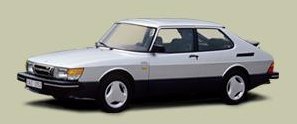 Saab 900 Turbo 16S
Saab 900 Turbo 16SBack in 1969, Saab merged with local truck maker Scania. They split in 1990 when 50 percent of the car division was sold to General Motors. Under the umbrella of GM, Saab got engineering support from Opel and produced the second generation 900 (later to be renamed to 9-3) based on Opel Vectra platform. 4 years later, the 9000 was replaced by 9-5, which was another development from Vectra. Saab started losing its unique character.
Since the late 1990s, the global market for premium cars gradually shifted towards German strong marques like BMW, Audi and Mercedes. Saab was one of the victims. GM bought the remaining 50% stakes in 2000 and tried to turn around it. However, without a far-sighted vision, the American company continued ruinning the unique character of Saab. It rebadged Subaru Impreza as Saab 9-2X and Chevrolet TrailBlazer SUV as Saab 9-7X. These cars were proved to be commercial flops as customers disagreed with such idea.
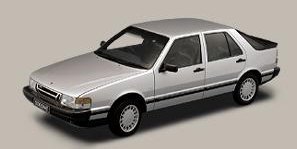 Saab 9000
Saab 9000In 2005, GM announced to shift the future production of 9-3 and 9-5 to Opel after the run out of current generation. This would effectively kill the Trollhattan plant and the real Saab as a Swedish car maker. However, the plan did not materialize as the global economy crisis in 2008 forced GM to spin off its loss-making Swedish subsidiary. In early 2010, GM sold Saab to an unlikely buyer, Dutch sports car maker Spyker.
Spyker boss Victor Muller worked hard to secure the future of Saab. He forged an engine supply deal with BMW and hired new design chief Jason Castriota to design Phoenix, the concept car that was supposed to foresee the next generation 9-3. Nevertheless, the lack of funding and the dismal sales results, partly due to the lack of customer confidence on its future, dried up its cash reserves. By April 2011, Saab failed to pay its workers and suppliers, thus the production line stopped. Muller attempted to introduce new Chinese investors (Hawtai, Youngman and Pang Da), but the efforts came fruitless when GM, which still held the license of its design and technology, opposed to the stakes sale in the fear of hurting its own interests in China. Eventually, Saab went burst just before the Christmas of 2011.